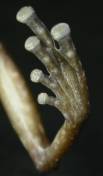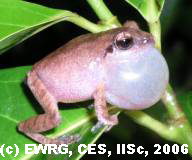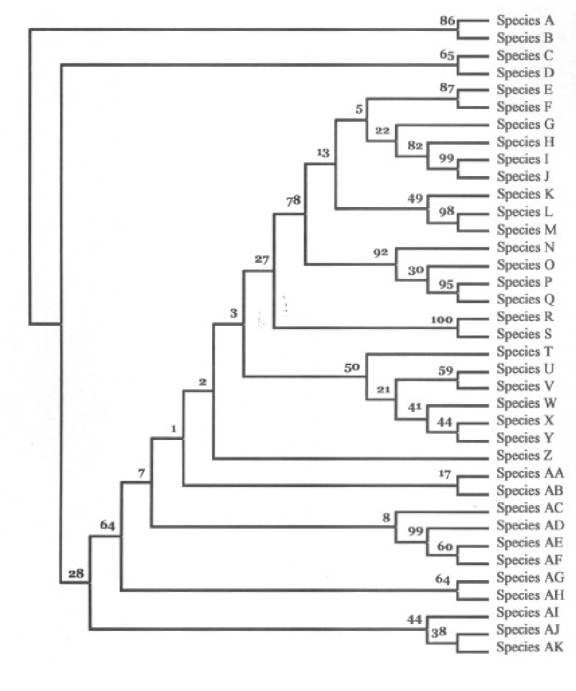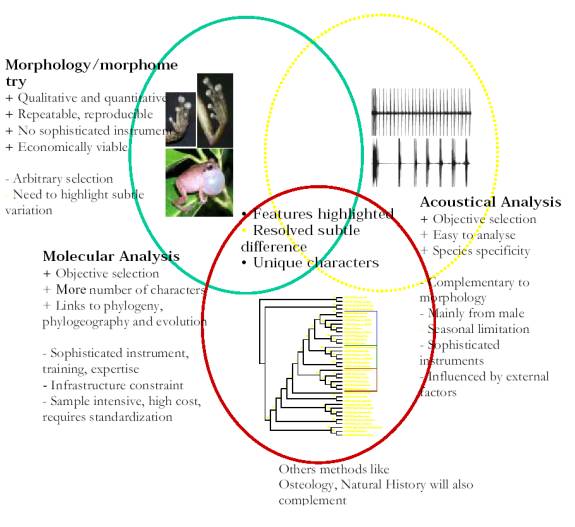


Presented in: 2nd National Conference of the Western Ghats Forum |
Dates: 1-2 December 2005, Organisied by : Salim Ali Centre for Ornithology and Natural History |
Title: Integrating Science and Management of Biodiversity in the Western Ghats |
| INTEGRATED APPROACHES TO MINIMISE AMBIGUITIES IN ANURAN DESCRIPTION (PDF) Gururaja K.V. and Ramachandra T.V. |
The Western Ghats and Sri Lanka, among the hottest hotspots of biodiversity, are being in more focus on amphibian studies, especially after the report of discovery of about 200 old world tree frogs from these two regions. Eventually, these regions became amphibian hotspots of the globe, surpassing Borneo, Madagascar etc. The evidence of decline in amphibian global population fuelled amphibian research in the past two decades, which has led to the description of new species and also to controversies associated with the approaches in describing a new species.
Review of the genus Philautus in 2001, provided a comprehensive account on the genus, which has heralded a competition among researchers from Sri Lanka and Western Ghats' on Philautus diversity. Amphibian diversity studies were also supplemented with the new discoveries of caecilians and other ranids in the Western Ghats. Such taxonomic oriented research activities in these regions, though is a positive development from conservation point of view, but has led to controversies due to ambiguous ecological status of some species. This has serious consequences in the conservation and management of Western Ghats, which necessitates an immediate step to arrive at a protocol in describing a new species. This paper while documenting the integration of many disciplines and emphasises the need for arriving at a consensus before assigning 'new status' to a species and asceliaining its ecological status.
In the Western Ghats, since 2000, 18 new species of amphibians belonging to two extant orders, namely anura and gymnophiona have been described mainly on the basis of morphology and morphometry (Mor)(Fig: 1). Recent advances in technology have provided sophistication in analysis and interpretation of molecular data (Mol), acoustics/vocalization (Voc) and osteology (Ost) to describe a new species. Table1 compares methods used by researchers to describe a new species in the Western Ghats. Recent description from Sri Lanka and Western Ghats indicates fragmented approaches in describing a species even today despite availability of better methods. However, most of the species have been described incompletely as there are limitation in traditional as well as in newer methods. Relative merits and demerits of these methods are listed in Table2. This necessitates integrated approaches involving morphological, molecular and acoustical analysis (fig: 2)along with natural history and osteology in species description. (fig: 3)
|
|
|
Fig: 1 Morphology-Morphometry
The case of so called 'extinct' frog taxa Philautus leucorhinus, Lichtenstein, Weinland and von Martens 1856 from Sri Lanka highlights the need for integrating molecular and morphological approaches, supplemented, by osteological, acoustical and developmental analysis in species description. In this case, except morphometry, all relative information like vocalization, reproductive behavior and molecular data are either obscure or not available, creating unnecessary confusion among conservation biologists on the exact status of the species.


Fig: 2 Molecular analysis
 |
 |
Fig: 3 Acoustical analysis
Table 1. Amphibian species described from the Western Ghats with various methods. |
||||||
| Species | Mor |
Mol |
Voc |
Nat |
Ost |
Key |
| Microhylidae | ||||||
| Microhyla sholigari | + |
- |
- |
- |
- |
- |
| Nasikabatrachidae | ||||||
| Nasikabatrachus sahyadrensis | + |
+ |
- |
-* |
+ |
- |
| Ranidae | ||||||
| A1inel1Jarya sahyadris | + |
+ |
- |
- |
- |
- |
| Nyctibatrachus hussaini | + |
- |
- |
- |
- |
+ |
| Nyctibatrachus petraeus | + |
- |
-* |
+ |
- |
- |
| Philautus bobingeri | + |
- |
- |
-* |
- |
- |
| Philautus graminirupes | + |
- |
- |
-* |
- |
- |
| Philautus griet | + |
+ |
- |
- |
- |
- |
| Philautus luteolus | + |
- |
+ |
- |
- |
- |
| Philautus nerostagona | + |
- |
- |
-* |
- |
- |
| Philautus ponmudi | + |
- |
- |
- |
- |
- |
| Philautus tuberohumerus | + |
- |
+ |
- |
+ |
- |
| Rhacophorus pseudomalabaricus | + |
- |
- |
-* |
- |
- |
| Caeciliidae | ||||||
| Gegeneophis nadkarnii | + |
- |
NA |
- |
- |
- |
| Gegeneophis madhavai | + |
- |
NA |
- |
- |
- |
| Gegeneophis danieli | + |
- |
NA |
- |
- |
- |
| Gegeneophis seshachari | + |
- |
NA |
- |
- |
- |
| Indotyphlus maharashtraensis | + |
- |
NA |
- |
- |
+ |
| Note: + presence, - absence, -* partial, NA - Not applicable; | ||||||
| Mor: MoiphologylMorphometry; Mol: Molecular analysis; Voc: Vocalization/Acoustical analysis; Nat: Natural history - Reproductive behaviour/developmental biology; Ost: Osteology/Skeletal morphology; Key: Identification keys | ||||||
Table 2. Advantages and disadvantages of various methods involved in species description. |
||
Methods |
Advantages |
Disadvantages |
Morphology |
• Qualitative and quantitative character selection • No sophisticated instruments required, a Vernier callipers is sufficient (at most digital one) to measure • Repeatable, reproducible • Fossil taxa can be analysed • Cluster analysis/Principal component analysis • Economically viable |
• Expertise in field knowledge • Arbitrary selection of characters • Requires highlighting of subtle variation in characteristics |
Molecular |
• Supplementary to morphology • Objective selection of quantitative characters • Highest number of characters • Important links to other disciplines like phylogeny, phylogeography and evolution • Many statistical approaches |
• Sophisticated instrument (Thermocyclers, Automated sequencers etc), training, expertise • Infrastructure currently available in few institutions in India with limited trained workforce • Sample intensive • High cost in repeating and resampling • Standardisation of a procedure– distance, maximum likelihood, parsimony or Bayesian |
Acoustics |
• Objective selection of qualitative and quantitative characters • Easy to analyse • Species specific |
• Complementary to morphology • Mainly from male individual (female lacks vocalisation) • Seasonal limitation (some species - male calls only during breeding season) • Sample intensive • Sophisticated instruments • Influenced by external factors • Overlapping of acoustics signatures requiring DSP expertise • Limited characters • High cost in repeating and resampling |
Natural History |
• Both qualitative and quantitative characters • Information about male and female individual • Complete life history information • Ecological, behavioural notes, etc. |
• Complementary to morphology • Time intensive • High cost in repeating and resampling |
Osteology |
• Similar to morphology, but restricted to skeletal morphology |
• Complementary to morphology • Time intensive • High cost in repeating and resampling |
Note: DSP – Digital Signal Processing |
||
Apart from the mandatory requirement of vouchering a type specimen to national museum with the information on place, date of collection, collector name and ecological notes, it is essential to standardise the protocol integrating all the aforesaid methods with keys to assign 'new taxon' while describing a species. This would eliminate the lacunae associated with the traditional as well as advanced methods. Morphological and molecular will complement each, while other methods like acoustics, natural history and osteology would supplement the description, resulting in a comprehensive description of the species. This would certainly eliminate the controversies associated in describing anuran species.
Gururaja K.V. and Ramachandra T.V. Energy and Wetlands Research Group Centre for Ecological Sciences Indian Institute of Science, Bangalore. E-mail: cestvr@ces.iisc.ernet.in E-mail: gururaj@ces.iisc.ernet.in |